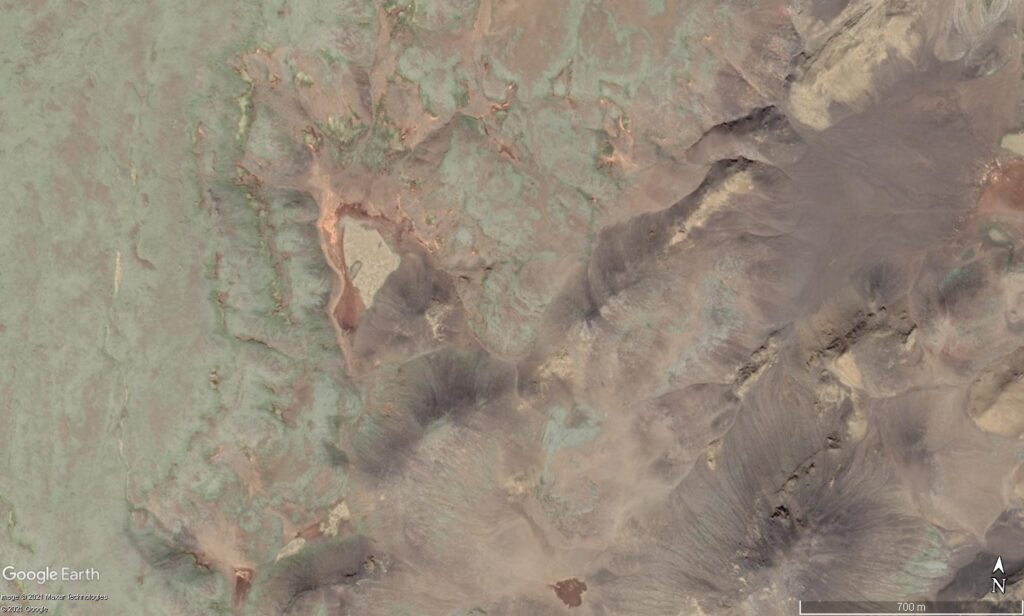This is a short article about the eruption in Geldingadalur. The volcano that is erupting continues to be Krýsuvík-Trölladyngja volcano system. This might change at later date. This article is written on 22-March-2021 at 17:30 UTC.
- The eruption is now mostly just in one crater. There is some activity in two other craters but it seems to be getting smaller as the eruption goes on.
- This eruption is tiny and one of the smallest eruption observed in Iceland.
- There is risk of new eruption opening up once this eruption ends or starts to get close to ending.
- There is a fissure in the ground on the right side of the main crater (as seen on the web camera). A lot of volcanic gas comes from that fissure but no eruption has taken place so far.
- There has not been any noticeable deflation according to GPS data from today (22-March-2021).
- The main crater is now estimated to be 30 meters high but it is unstable and collapses often.
- The lava is estimated going to fill Geldingadalur valley in 10 to 14 days if the eruption continues this long.
- Earthquake activity has almost stopped on Reykjanes peninsula after the eruption started. Once the eruption stops earthquake activity might increase again.

The last eruption period on Reykjanes peninsula lasted from the ~700 to the year ~1400. It can be estimated that current eruption period that has now started on Reykjanes peninsula is going to last until the year ~2400 to the year ~2600. During this time shortest time between eruptions is 1 year but the longest time between eruptions might be up to 10 years. How this going to be exactly is a big question but this estimate of mine is based on the limited historical data that I have read somewhere (I no longer remember where that was).
News items with videos
Tower breaks again, lava gushes forth (Rúv.is)
Web cameras now with English text
Live feed from Iceland volcano (Rúv.is)
Live from Geldingadalir volcano, Iceland (YouTube)
Rúv has moved the stream to YouTube only.
Beint: Eldgosið í Fagradalsfjalli (mbl.is, this camera is on the other side compared to the Rúv camera)
Update at 23:57 UTC
According to the evening news on Rúv the lava and magma that is now flowing into the valley of Geldingadalur is around 1200C and is a primitive magma of Tholeiitic magma series (Wikipedia). The source of this eruption is a magma chamber with the depths of 17 km to 20 km and the origins of the magma it self is far deeper into the hotspot below Iceland. This magma has a lot of CO and CO2 gases that are highly dangerous. There is also a lot of SO2 gas in the eruption and that is dangerous gas.
News in Icelandic about this
Hraunkvikan sýnir beintengingu við miðju möttulsins
Rate of updates
Since the eruption is now in stable activity I am going to limit update to if anything major happens. Next update about the eruption should be on Friday 26-March-2021. Other activity in Iceland is going to be reported as normal if anything happens.
Donation
Please remember to support my work with donations. Google Adsense remains limited on my website and I don’t know when it might get back to normal. Thanks for the support. 🙂
Article updated at 18:32 UTC. New web camera added.
Article updated at 20:50 UTC. Web camera information updated.
Article updated at 23:57 UTC. Information added about the eruption.

Thank you Jon for your updates and links, great to follow. Has been an exciting few weeks, and thrilling weekend. Your website has been a little difficult to access over the past few days, perhaps caused by a high volume of traffic?
Have been following you since 2010, wish you all the best.
I am trying to figure that out. There has been attacks on my hosting provider according to their reports and that might be why the website is difficult to access. I’ll send them a new email about this issue.
There is a small chance this is a connection problem with your ISP since I only got two reports about this issue and both use the same ISP in UK (I got the other with a twitter message).
The geochemistry is fascinating. I’ve seen samples with lovely olivine phenocrysts, and the latest analysis shows this coming from much deeper than expected, below the mantle boundary at ~17km. There’s suggestion that, rather than the typical Reykjanes crater row on a fissure, this could end up as a shield volcano if it keeps erupting. That hasn’t happened in a long time.
There have not been any eruption of shield volcano type on Reykjanes peninsula for the last 8000 years, maybe the last eruption of this type was 6000 years ago. I don’t remember the numbers exactly and I am not sure on what source is correct about this.
The significance is the depth and composition of magma; magma like this hasn’t been erupted in the last 7,000 years either!
And that Mike Ross probably means that this eruption can go on for a long time.
Can you help interpret the drumplot/tremor plot on Isolfsskali (ISS) station? It looks like tremor pulses to me, but may be weather induced?
http://hraun.vedur.is/ja/drumplot/drumplot/iss_highpass_2.0.png
The signal is unclear on the tremor plot.
http://hraun.vedur.is/ja/oroi/iss.gif
Yes, the “tremors” from the drumplot (from about 11 o clock) are not at all pronounced on the tremor plot, compared to last few days. It’s a bit weird.